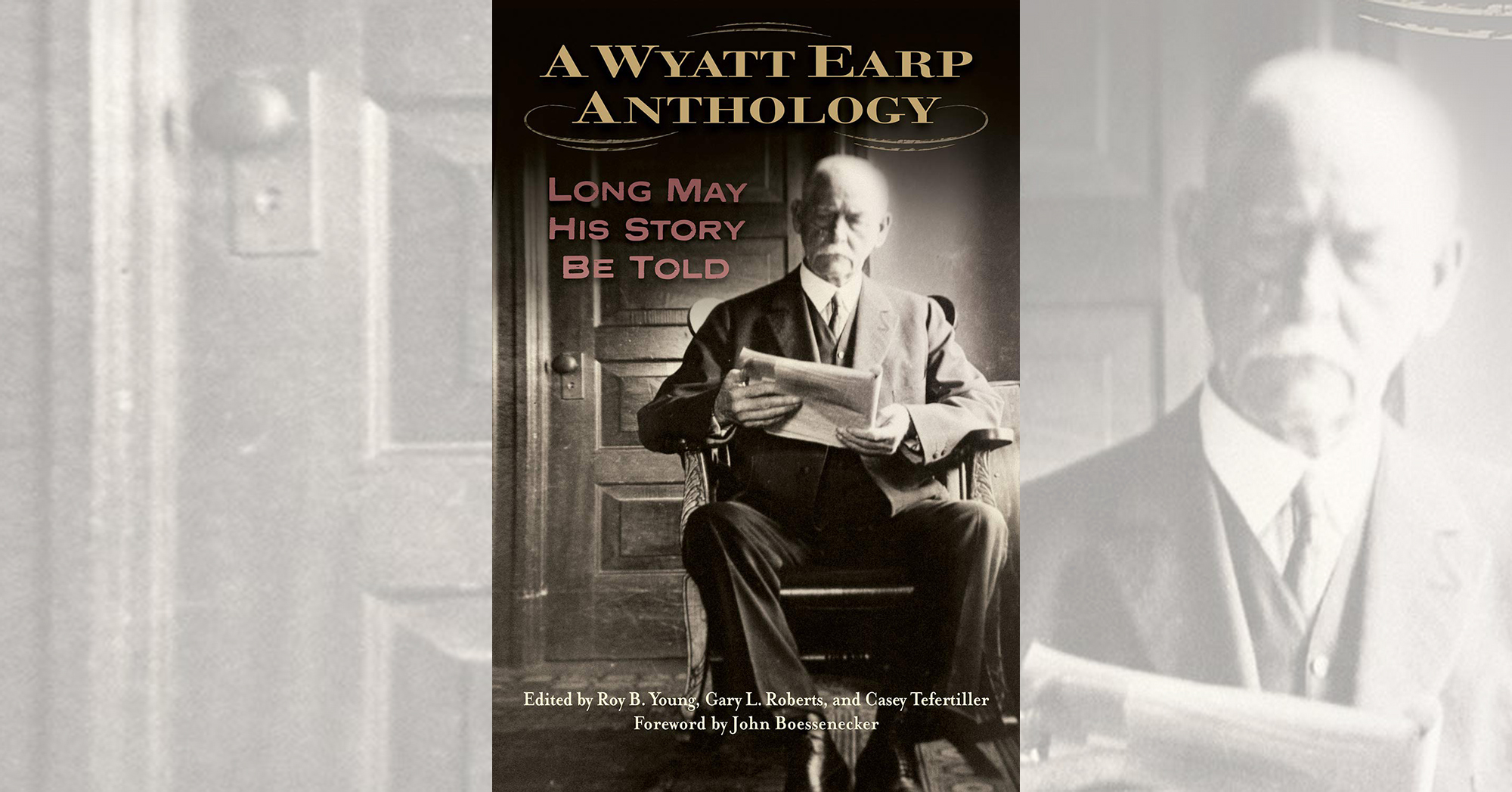A Wyatt Earp Anthology: Long May His Story Be Told, edited by Roy B. Young, Gary L. Roberts and Casey Tefertiller, University of North Texas Press, Denton, 2019, $45
The subtitle is drawn from the theme song of The Life and Legend of Wyatt Earp, a hugely popular 1950s TV series starring Hugh O’Brian that was based on Stuart Lake’s 1931 hagiography Wyatt Earp: Frontier Marshal. A flood of other Earp tales (on-screen and in print, some negative, some positive) have swept across the historical-minded nation since O’Brian hung up his Buntline Special—and some of the stories long told have even been true.
A Wyatt Earp Anthology, writes esteemed Western historian John Boessenecker in the foreword, “is a living record of the arduous work performed in attempting to dig out Earp’s true story.” Roy B. Young, a charter member of the Wild West History Association, came up with the idea but soon realized, as he writes in the preface, “this was a project too big for one person.” The three editors did well in their respective digging through past publications, having selected more than 60 articles and excerpts from books and presented here in seven parts—“Wyatt Earp, the Man and the Myth: An Overview,” “Riding a Troubled Trail,” “A New Start in Kansas,” “Triumph and Tragedy in Tombstone,” “Riding Toward Sunset,” “The Making of a Legend” and “They Varied Wyatt Earp.” One of Young’s fellow editors, Casey Tefertiller, wrote the excellent 1997 biography Wyatt Earp: The Life Behind the Legend and also eight of the Anthology entries, including “Finding Wyatt,” an award-winning article published in the October 2017 Wild West that covered the Earp research and discoveries done since the publication of Tefertiller’s biography of the legendary lawman.
Wild West is well represented with 10 previously published articles and one editor’s letter. Besides “Finding Wyatt,” Tefertiller also wrote “Dangerous Charm: John Ringo of Tombstone,” for the February 2000 issue. Others that made the cut include the late Roger Jay’s groundbreaking “The Peoria Bummer: Wyatt Earp’s Lost Year,” Gary Roberts’ “Brothers of the Gun: Wyatt and Doc,” Nicholas R. Cataldo’s “Father of the ‘Fighting Earps,’” Boessenecker’s “Lawman Bob Paul’s Doc and Wyatt Connection,” Peter Brand’s “Wyatt Earp’s Vendetta Posse,” Bob Palmquist’s “Justice in Tombstone,” Pam Potter’s “Wyatt Earp in Seattle” and Paul Lee Johnson’s “The Will of McLaury.” Readers interested in the lively stories told by people who didn’t always stick to the facts can turn to Part VII for such offerings as three from Roberts, the third Anthology editor: “The Real Tombstone Travesty: The Earp Controversy From Bechdolt to Boyer,” “Allie’s Story: Mrs. Virgil Earp and the ‘Tombstone Travesty’” and “Trailing an American Mythmaker: History and Glenn G. Boyer’s Tombstone Vendetta.”
Don’t miss a thorough summary of all things Earp in the epilogue, in which Roberts writes: “The truth is, myth is not the enemy of history. Indeed, it can be argued that insofar as popular interest in the history of the American West is concerned, it is its raison d’être.” Even at a whopping 861 pages, the editors had to leave out some interesting work, including anything from the late and highly controversial Glenn Boyer (who invented more than a few things in his books), longtime Tombstone historian Ben Traywick and the late Lee Silva (who wrote a couple of huge volumes but never completed his Wyatt Earp: A Biography of the Legend series).
—Editor





